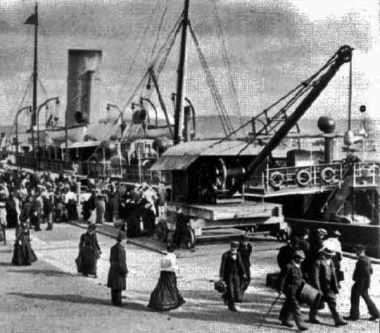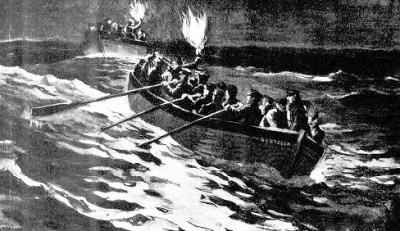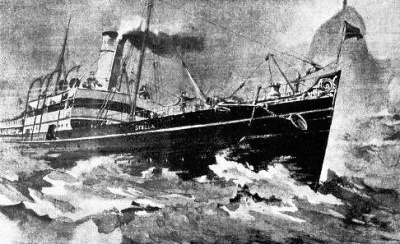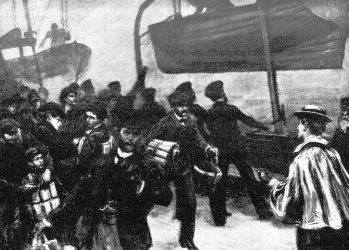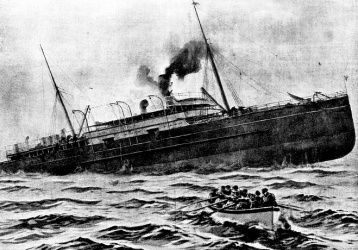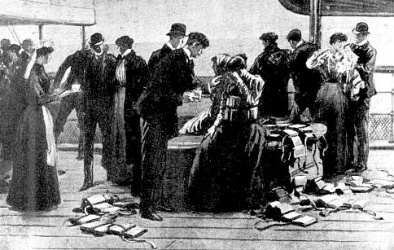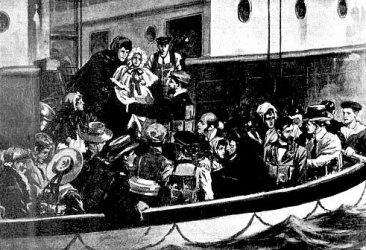Frederica
Frederica was one of the three famous sister ships of 1,059 tons. Built for the London and South Western Railway, her maiden voyage to the Channel Islands was on 31 July 1890. She had a single funnel and was lengthened in 1904.
The new ships were built to compete with the Great Western Railway's new vessels on the Channel Island routes, with speed being seen as all-important. Frederica duly delivered, recording 19.5 knots in trials a few weeks before her maiden voyage - some three knots faster than the competitor's Antelope, Gazelle and Lynx.
Capt Allix was in command on her maiden voyage. To begin with Frederica operated on the Channel Island routes, but in 1893 she was moved to Le Havre and spent three years operating an extended service before returning to the islands in 1896. She remained on these routes, off and on, until 1911, undergoing a number of alterations, including the fitting of a tall funnel to allow low-grade coal to be used. This was not a success and new boilers had to be installed.
In 1911 Frederica was sold to a Turkish Company who renamed her Nilufer and she was eventually lost in the 1914-18 war.
Lydia
Following Frederica into service for the London and South Western Railway was her sister ship Lydia. Her maiden voyage to the Channel Islands was on 7 October 1890, and at the time she was the fastest vessel in existence, achieving 19.55 knots in trials on 29 September 1890. Her record was beaten when the Great Western Railway Company's Ibex came on service.
On 6 May 1891 Lydia hit La Rond Rock off Guernsey. She managed to refloat and just made St Peter Port Harbour before running aground with her foredeck under water.
Another incident involved a furnace blow-back in St Helier Harbour in 1901. The furnace casing caught fire and it took an hour to put out.
A refit in 1904 saw an enlarged dining room moved up a deck making way for a new ladies' first class suite and extra cabins. New boilers were installed soon after giving Lydia a new lease of life, which saw her operating between Southampton and Le Havre and the islands and St Malo.
She sailed from Jersey as a mailboat for the last time in 1915 and was pressed into war service, returning to Jersey within a month with prisoners of war headed for the camp at Blanches Banques. In 1919 she visited Guernsey with the survivors of the island Contingent, but she was then returned to her owners, and promptly sold to Coast Lines, and later resold to a Greek Company and renamed Ierax, being eventually broken up in 1937.
Stella
The third of the London and South Western Railway trio of sisters was the ill-fated Stella, whose maiden voyage to Jersey was on 6 November 1890.
On a voyage from Southampton to Guernsey on 30 March 1899, Stella was wrecked with the loss of 105 lives when she struck rocks at the Casquets running at full speed. There were 112 survivors and some of them were rescued by the Lynx, the Vera and a French tugboat.
This dreadful accident caused the rival shipping companies to abandon races between their ships and in due course they agreed to stop competition altogether and set up a joint service.
Stella shipwreck
These pictures of the wrecking of the Stella in 1899 were published by the Graphic
